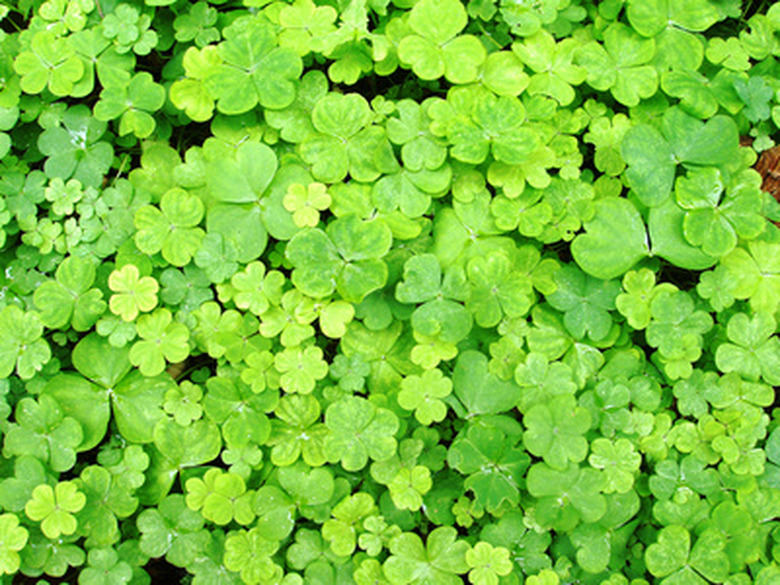Plants That Have Three Parts To Their Leaves
A plant's leaf is attached to its stem at the leaf base, or leaf petiole. Plants have many different leaf arrangements, but those with three parts fall into the category of either compound leaves with three distinct sections to their leaves joined at each leaflet's petiole, or lobed leaves with two or more distinct lobes on the leaf margin and a single leaf petiole.
Leaf Parts
The easiest way to identify a leaf is by the specific traits of certain parts of the leaf. The correct terms for these traits are key to using a guide for plant identification. The petiole is the part of the leaf stem or mid-rib at the base of the leaf where it joins the trunk stem. The leaf margin is the very edge of the leaf which can be smooth or entire, serrated like a knife edge, ondulate or slightly wavy, or lacinate with tiny lobes. The leaf margin can also have large lobes, which are often entire but are sometimes slightly serrated.
- A plant's leaf is attached to its stem at the leaf base, or leaf petiole.
Compound Leaves
Compound leaves are distinct from each other, and yet attach to only one stem at each leaflet's petiole. Each of the small leaves that make up the compound leaf is called a leaflet. Compound leaves can have as few as three leaflets, or many more attached to a single long stem. The leaflets look like distinct leaves, but since the leaflets share a common stem, they are grouped into a compound leaf group.
Compound Leaf Examples
Common types of trifoliate compound leaves include clover and strawberry leaves. Some trees, such as the box elder, have trifoliate compound leaves, while others, such as the black walnut and ailanthus, have compound leaves with many more leaflets.
Lobed Leaves
Lobed leaves are individual leaves on a single stem that have distinct sections with several veins branching out from the leaf petiole to the leaf margin. Each of these veins ends at the tip of a distinct leaf lobe. Leaves can have a single main vein which smaller veins branch off, or they can have two or more main veins, in which case they are called palmate leaves.
- Compound leaves are distinct from each other, and yet attach to only one stem at each leaflet's petiole.
- The leaflets look like distinct leaves, but since the leaflets share a common stem, they are grouped into a compound leaf group.
Lobed Leaf Examples
Lobed leaves are also very common; most maple leaves with three distinct and often serrated lobes are an example of leaves with three lobes. Some plants, such as the sassafras tree, can also have several different leaf-types. The sassafras tree exhibits leaves without any lobes, with two lobes and also with three lobes often all on the same tree. Fig tree leaves also commonly have three to five distinct lobes on each leaf with margins which are sometimes entire, and sometimes ondulate.
